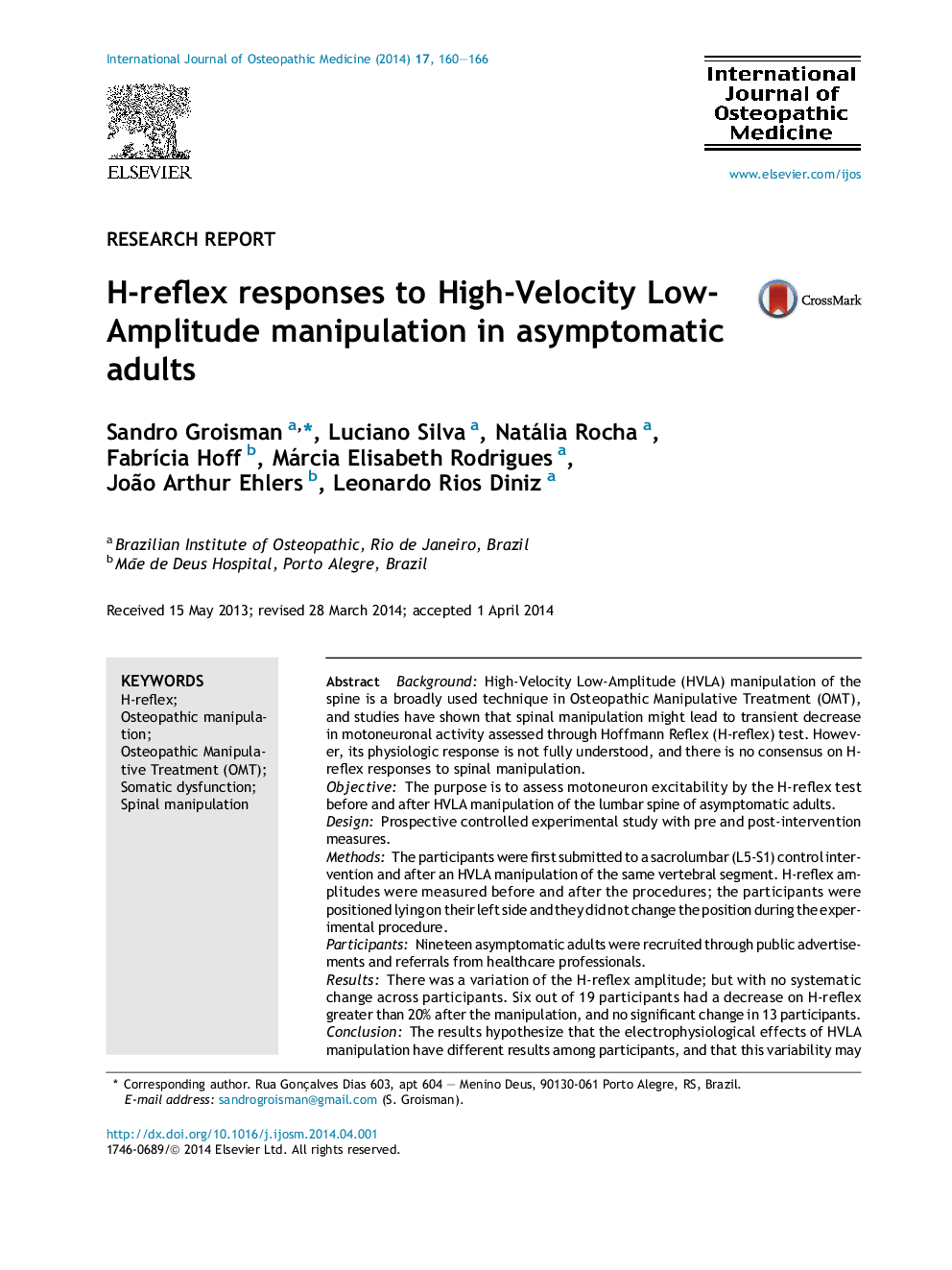| Article ID | Journal | Published Year | Pages | File Type |
|---|---|---|---|---|
| 2618071 | International Journal of Osteopathic Medicine | 2014 | 7 Pages |
BackgroundHigh-Velocity Low-Amplitude (HVLA) manipulation of the spine is a broadly used technique in Osteopathic Manipulative Treatment (OMT), and studies have shown that spinal manipulation might lead to transient decrease in motoneuronal activity assessed through Hoffmann Reflex (H-reflex) test. However, its physiologic response is not fully understood, and there is no consensus on H-reflex responses to spinal manipulation.ObjectiveThe purpose is to assess motoneuron excitability by the H-reflex test before and after HVLA manipulation of the lumbar spine of asymptomatic adults.DesignProspective controlled experimental study with pre and post-intervention measures.MethodsThe participants were first submitted to a sacrolumbar (L5-S1) control intervention and after an HVLA manipulation of the same vertebral segment. H-reflex amplitudes were measured before and after the procedures; the participants were positioned lying on their left side and they did not change the position during the experimental procedure.ParticipantsNineteen asymptomatic adults were recruited through public advertisements and referrals from healthcare professionals.ResultsThere was a variation of the H-reflex amplitude; but with no systematic change across participants. Six out of 19 participants had a decrease on H-reflex greater than 20% after the manipulation, and no significant change in 13 participants.ConclusionThe results hypothesize that the electrophysiological effects of HVLA manipulation have different results among participants, and that this variability may be due to dysfunction at the level manipulated, changes in autonomic tone and/or technical issues delivering the technique.
